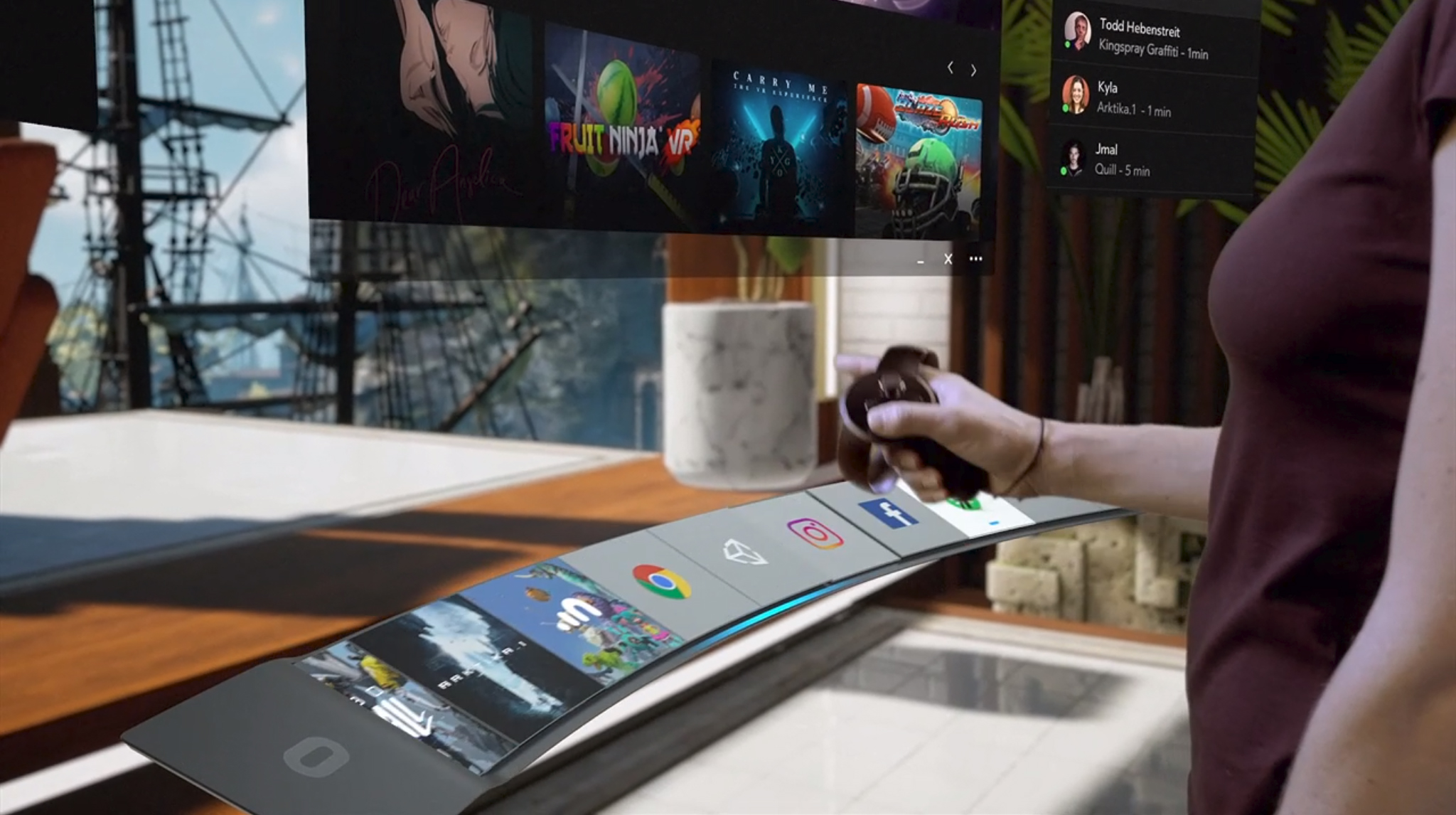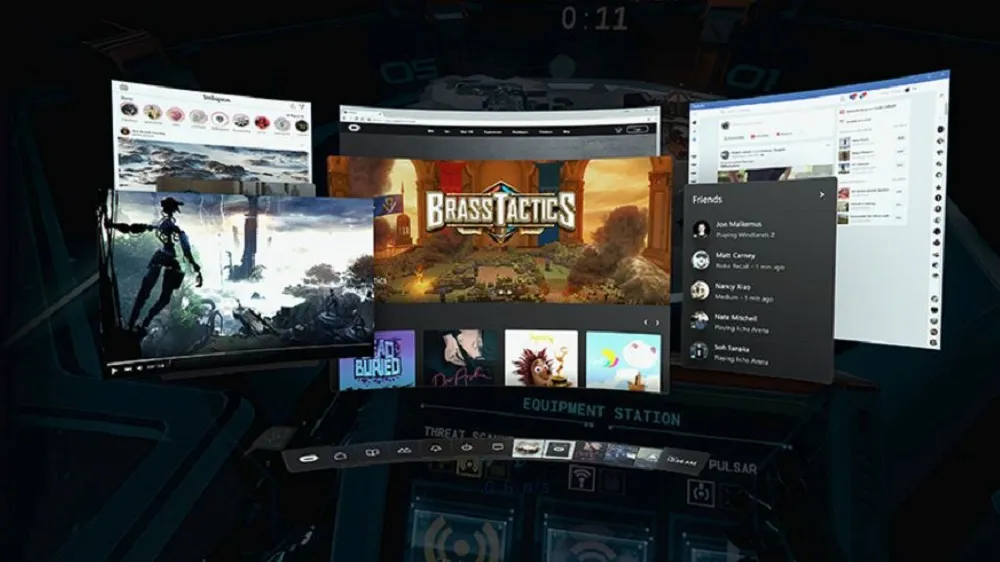When the Oculus Rift launched back in mid-2016, its system software and store were criticized for the relative lack of features compared to other platforms and stores (such as Steam). In fact, the software couldn’t even be installed to any hard drive other than the system drive (nor could VR games/apps from Oculus’ store).
In the following years, Oculus slowly added the missing features such as custom install folders, ratings & reviews, a wishlist, refunds, and cloud save support. However, the core experience of the “Home” environment and the Rift’s in-VR menu system remained the same until in late 2017 at their Connect 4 conference, when Oculus launched the beta for Rift Core 2.0. Now, Oculus is taking it out of beta and rolling it out to all Rift owners.

Oculus Home 2.0 is a total revamp. Instead of the old static environment where the user was locked to one position, Home is now customizable with hundreds of objects and textures. From within VR, the user can spawn and place these objects, or even import their own models from Medium or their PC. It now uses Unreal Engine with dynamic lighting and physically based rendering, which delivers a more realistic look, but with a performance penalty. This extra performance hit has led to complaints from Rift owners on lower end systems, and even the creation of Oculus Homeless, a tool which replaces Home 2.0 with a blank grey room.
At Connect 5, Oculus also announced custom developer items, letting developers add unlockable objects for Oculus Home in their game. The developers of Superhot VR, Moss, Echo Arena, Job Simulator, OrbusVR, and Arizona Sunshine have all already added such unlockables. It’s worth mentioning as well that SteamVR Home has had custom environments, collectible items from games, and the ability to explore the Home space for quite some time already.
But arguably the biggest change to Home from before is that it is now social. Whereas the old Oculus Home was isolated to the user, Home 2.0 lets up to 8 Rift users hang out in each others homes in real-time using their Oculus Avatar.

The other major component in Rift Core 2.0 is Dash. With the old Rift system software, if the user wanted to control something on their PC or bring up a traditional app like their browser, they needed to take the headset off and do this with their monitor. The competing SteamVR platform had a virtual monitor view from its menu system, as well as apps like OVRDrop.
With Dash, a virtual view of the user’s monitor can be brought up at any time (in Home or in any VR app). But better yet, specific desktop windows can be “pulled out” of the virtual monitor and “pinned” in place, so even when the Dash menu is closed they will remain. This allows for use cases like watching Netflix in Elite Dangerous (as if your ship had a TV), or for positioning the chat of a livestream behind you in Robo Recall.
In this latest releases of Core 2.0, Home has received Dash integration. This allows users to pin windows onto virtual TVs and monitors in VR, and similar to the free cross-platform app Bigscreen, the contents of these windows can be seen by other users in the space via streaming.
Oculus tell us that Dash uses low level APIs developed in cooperation with NVIDIA and AMD which should theoretically make the performance hit much less than using existing techniques.
Additionally, Oculus are using the underlying technology behind Dash to bring traditional PC software into VR, which they’re calling Hybrid Apps. Hybrid Apps promise to let developers bring their software to VR without the normal cost and complexity of a true VR port, but it is yet to be seen how widespread the adoption will be.
With Core 2.0, Oculus’ direction for the future of their PC VR platform is becoming clear: Oculus wants Home to be your central, personalized hub for coordinating multiplayer sessions, and wants Dash to one day kill the need for a physical monitor. In fact, Oculus Chief Scientist Michael Abrash has said that this concept of a social VR workspace with infinite virtual windows is his ideal use case for VR.

























